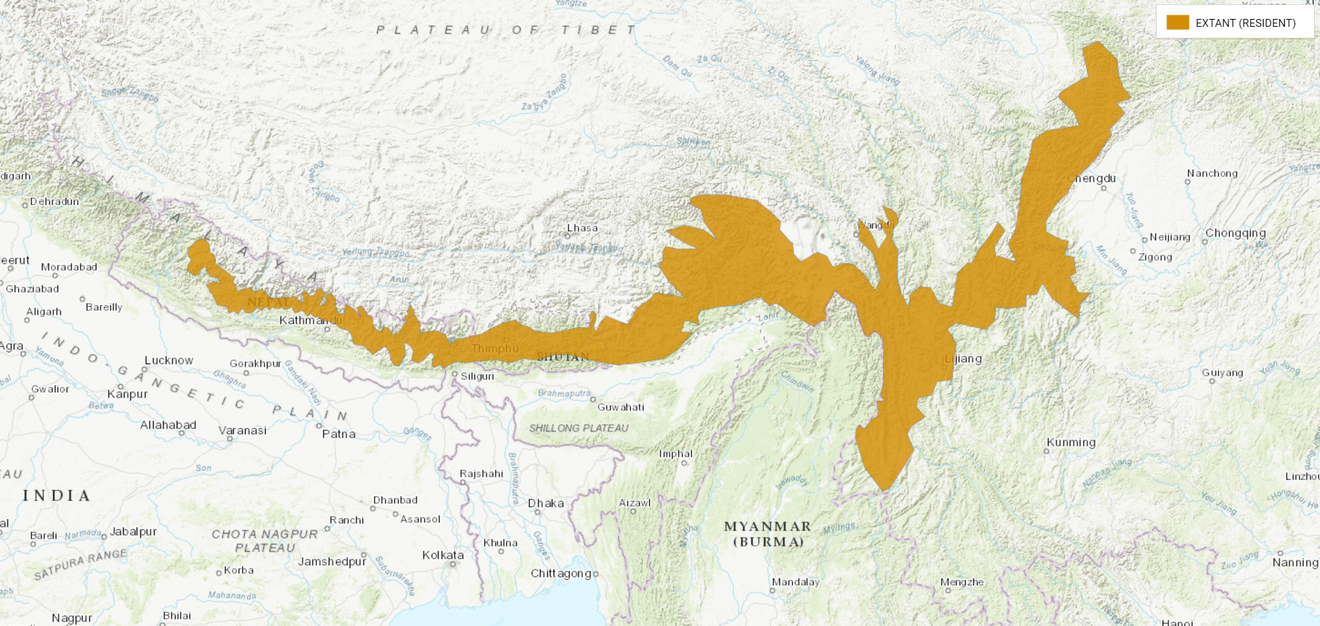Subject
- #Red Panda
- #Bamboo
- #Endangered Species
- #Habitat Destruction
- #Habitat
Created: 2024-02-05
Created: 2024-02-05 15:15

IUCN
When we think of pandas, we usually imagine a white body with black legs, black eyes, and black ears. However, there's a red panda, the lesser panda (Red Panda), that looks completely different from the panda we know. With black legs and belly and a reddish-brown back, the lesser panda primarily lives in trees in the forest. Apparently, they use their long tails to maintain balance even in tall trees. Their faces have white spots, reminding us that they are indeed pandas, but at first glance, they look like just another bear.
The lesser panda is popular with people for its charm, which is different from that of the panda. Sadly, however, the lesser panda is listed as an endangered species (EN) by the International Union for Conservation of Nature (IUCN). Being on the Red List of endangered species means that it faces an extreme risk of extinction in the wild in the near future.

IUCN
Inhabiting countries like Myanmar, India, Nepal, and China, the estimated global population of the lesser panda is less than 10,000. The number of lesser pandas has decreased drastically over the past 20 years, with a staggering 40% decline in population.
Several factors contribute to the lesser panda's endangered status. As with all endangered species, illegal poaching by humans is a constant issue. While some hunt them for their fur to make clothing like hats, others are caught in traps set for other animals in the forest.
Although lesser pandas eat birds, eggs, and insects, they also enjoy bamboo, just like other pandas. However, due to human development, bamboo forests are shrinking, reducing both the lesser panda's habitat and food supply. The decrease in bamboo forest area threatens all pandas, including the lesser panda. Even without direct human development, climate change also contributes to habitat loss. As the climate crisis intensifies, natural disasters like floods, landslides, and heavy snow become more frequent, severely impacting the lesser panda's habitat.

WWF
To protect the lesser panda, which is abundant in Nepal, the World Wide Fund for Nature (WWF) is collaborating with yak herders in Nepal to ensure that human activities don't affect the lesser panda's habitat. The WWF also organizes lesser panda tourism. When conducted at a suitable level that doesn't stress the wildlife, tourism can be a way to protect endangered species. Additionally, legal measures are in place to protect the lesser panda. Hunting or trading lesser pandas can result in a 10-year prison sentence or a fine of over $1,000.
According to the IUCN, China has over 40 protected areas for lesser pandas, while India and Myanmar have around 20. The non-profit organization 'Red Panda Network' works to protect both the lesser panda and its habitat. The Red Panda Network collaborates with local communities to monitor the population and conduct research on the lesser panda. They also engage in fundraising activities, so if you're interested, you might want to check them out.
Comments0